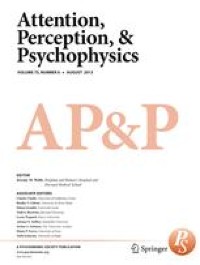Abstract
Ensemble statistics of a visual scene can be estimated to provide a gist of the scene without detailed analysis of all individual items. The simplest and most widely studied ensemble statistic is mean estimation, which requires averaging an ensemble of elements. Averaging is useful to estimate the mean of an ensemble and discard the variance. The source of variance can be external (i.e., variance across the physical elements) or internal (i.e., imprecisions in the estimates of the elements by the visual system). The equivalent noise paradigm is often used to measure the impact of the internal variance (i.e., the equivalent input noise). This paradigm relies on the assumption that the averaging process is equally effective independently of the main source of variance, internal or external, so any difference between the processing when the main source of variance is internal or external must be assumed not to affect the averaging efficiency. The current fMRI study compared the neural activity when the main variance is caused by the stimulus (i.e., high variance) and when it is caused by imprecisions in the estimates of the elements by the visual system (i.e., low variance). The results showed that the right superior frontal and left middle frontal gyri can be significantly more activated when the variance in the orientation of the Gabors was high than when it was low. Consequently, the use of the equivalent noise paradigm requires the assumption that such additional neural activity in high variance does not affect the averaging efficiency.



Δεν υπάρχουν σχόλια:
Δημοσίευση σχολίου
Σημείωση: Μόνο ένα μέλος αυτού του ιστολογίου μπορεί να αναρτήσει σχόλιο.